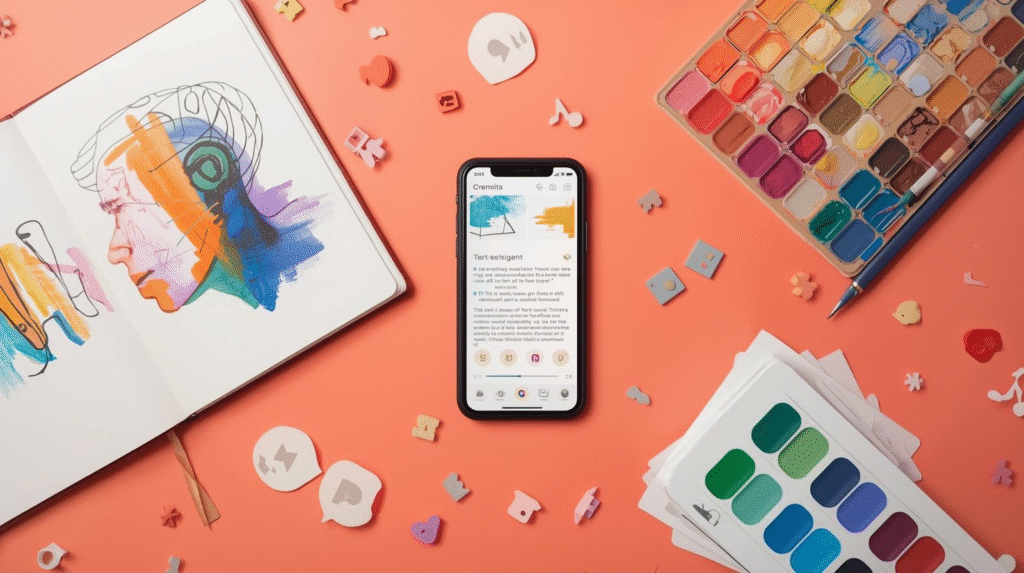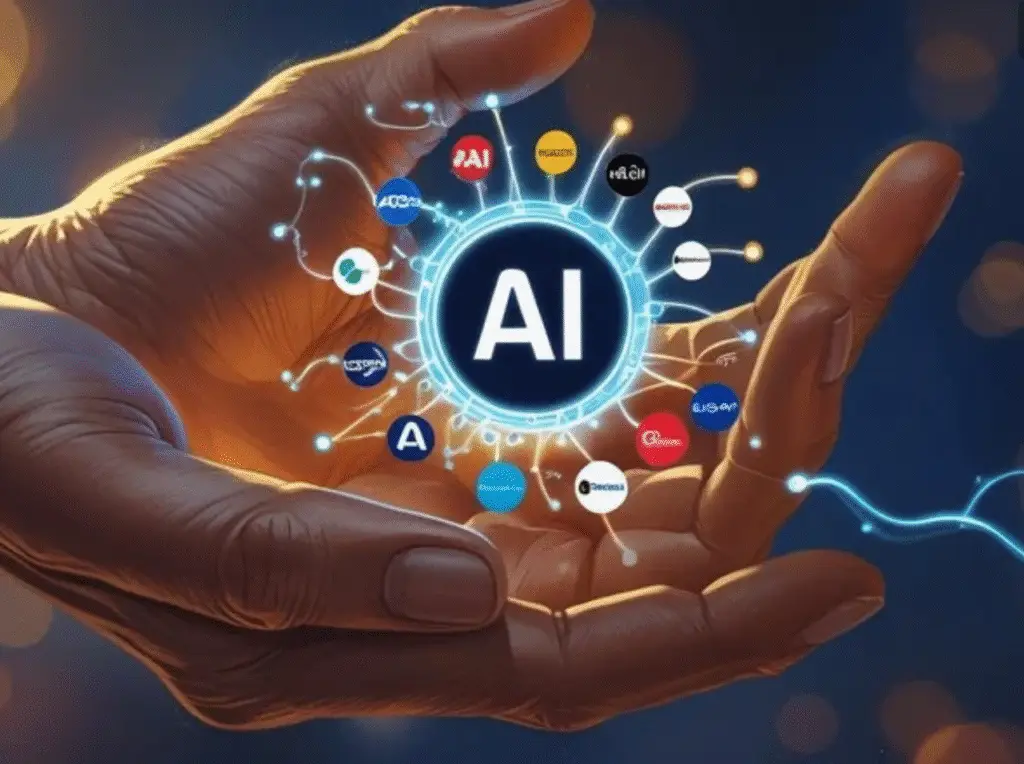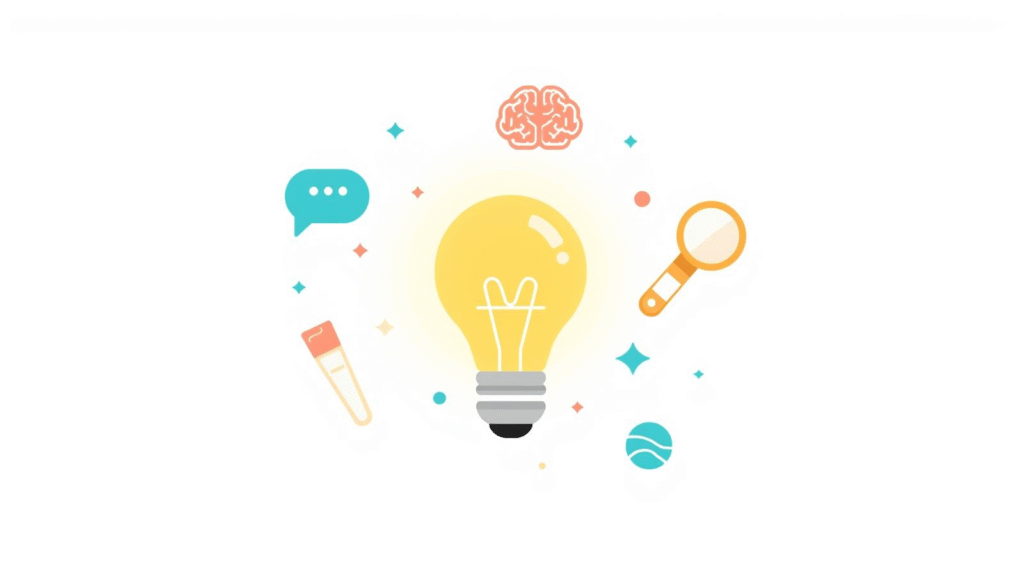If you’ve ever used ChatGPT to write a paragraph, asked an image generator to draw a cat wearing sunglasses, or seen a song created by AI, then you’ve already met generative AI. It’s one of the most exciting (and sometimes confusing) parts of artificial intelligence. These are tools that don’t just analyse data, but actually create something new from it.
Generative AI might sound futuristic, but it’s already part of everyday tools millions of people use. In this guide, we’ll break down what it is, how it works in simple terms, and show you real-life examples you can try today.
What Is Generative AI?
Generative AI refers to artificial intelligence systems that can produce original content, such as text, images, music, video, and even code – based on patterns they’ve learned from existing data. Unlike traditional AI, which is trained to recognise patterns and make predictions, generative AI uses those patterns to generate new material that resembles what it has studied.
Think of it like a student who has read thousands of books, learned how sentences and stories are structured, and can now write new stories that sound like the ones it has read. It doesn’t copy, it creates something new using what it has learned.
How It Works (Without the Jargon)
Generative AI models are trained on large datasets comprising collections of text, images, audio, or other examples. During training, the AI learns the patterns and relationships within the data. When you give it a prompt, it uses those patterns to predict what should come next and builds a new piece of content from scratch.
Here’s a simple way to imagine it:
- A text generator like ChatGPT has read billions of words and knows how words and ideas fit together. When you ask it a question, it predicts the most likely sequence of words to form a useful answer.
- An image generator like DALL·E has seen millions of pictures with captions. When you describe a scene (“a fox reading a newspaper in a café”), it combines patterns from what it has learned to create an entirely new image.
It doesn’t “think” or “imagine” like a human does – it uses patterns and probabilities to build new content that fits the style you asked for.
Common Types of Generative AI
Generative AI comes in many forms, depending on what type of content it creates.
- Text generators – Tools like ChatGPT, Gemini, and Claude can write essays, summaries, blog posts, stories, and even code.
- Image generators – Tools like DALL·E, Midjourney, and Leonardo.ai turn written descriptions into original artwork or realistic photos.
- Music generators – Platforms like Suno and Mubert can compose original songs or soundtracks.
- Video generators – Tools such as Pika and Runway can create video clips from scripts or text prompts.
- Code generators – Tools like GitHub Copilot suggest lines of code and help build apps faster.
Each of these uses the same basic principle: learn from existing examples and create something new that follows similar rules.
Simple Real-Life Examples
You don’t need technical skills to try generative AI. Here are a few ways beginners are already using it:
- Write with AI: Use ChatGPT to draft an email, write a blog post outline, or create product descriptions.
- Design with AI: Use Canva’s AI image generator to create unique backgrounds or social media graphics.
- Learn faster: Ask Gemini to summarise a long article in simple terms.
- Get creative: Use DALL·E to illustrate a bedtime story or design your dream kitchen.
- Make music: Try Suno to generate background music for a podcast or video.
Each of these tools uses generative AI to turn your ideas into something you can see, hear, or read.
Benefits of Generative AI
Generative AI offers powerful benefits for everyday users:
- Saves time by automating creative tasks like writing, summarising, or designing
- Boosts creativity by helping brainstorm ideas or visualise new concepts
- Makes learning easier by turning complex topics into simple explanations
- Levels the playing field by giving non-designers, non-writers, and non-coders professional-quality results
You don’t need to be an expert — you just need to know how to ask the right questions.
Limitations to Be Aware Of
Generative AI is impressive, but it’s not perfect. It can sometimes:
- Produce inaccurate or made-up information (known as “hallucinations”)
- Reflect bias in the data it was trained on
- Struggle with tasks requiring real-world understanding or judgment
- Generate content that looks similar to existing material
That’s why it’s important to treat AI as a helper, not a replacement. Always review its output before using it publicly or professionally.
The Future of Generative AI
Generative AI is still developing rapidly. In the near future, we’ll see it become more interactive, more personalised, and more integrated into everyday tools. Imagine presentations that design themselves, videos edited in seconds, or personalised learning companions that adapt to your style. As these tools evolve, understanding how they work now gives you a head start.
What Next
Generative AI is a tool, not a mystery. The more you experiment with it, the more useful it becomes. Start small — try writing a paragraph, designing an image, or summarising a long email. You’ll quickly see how powerful it can be.
To explore the basics of how AI learns, read How AI Actually Learns: A Beginner’s Guide to Training Data and Patterns. And if you’d like to experiment with beginner-friendly tools, check out Beginner-Friendly AI Tools: Five AI Tools Anyone Can Use.



